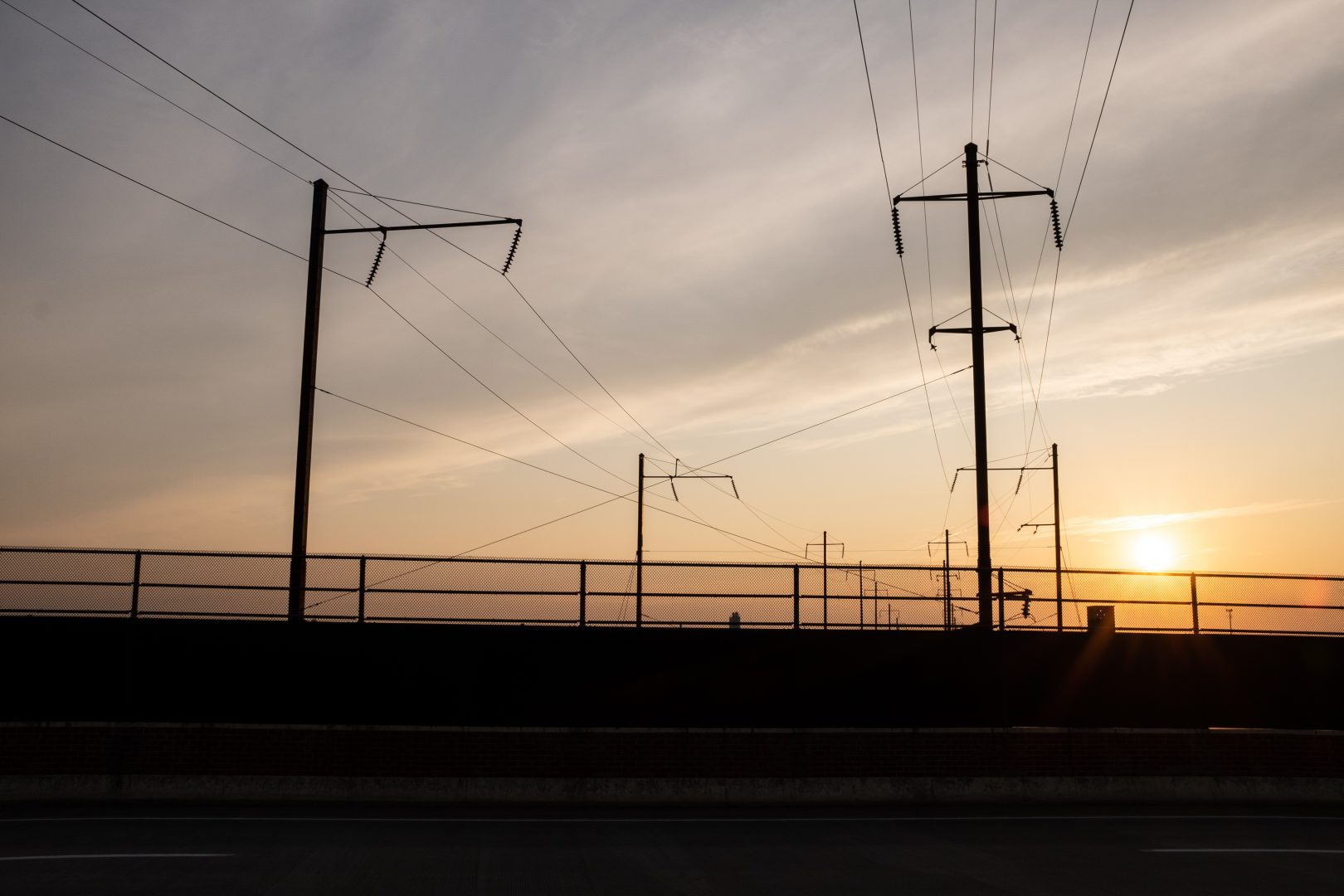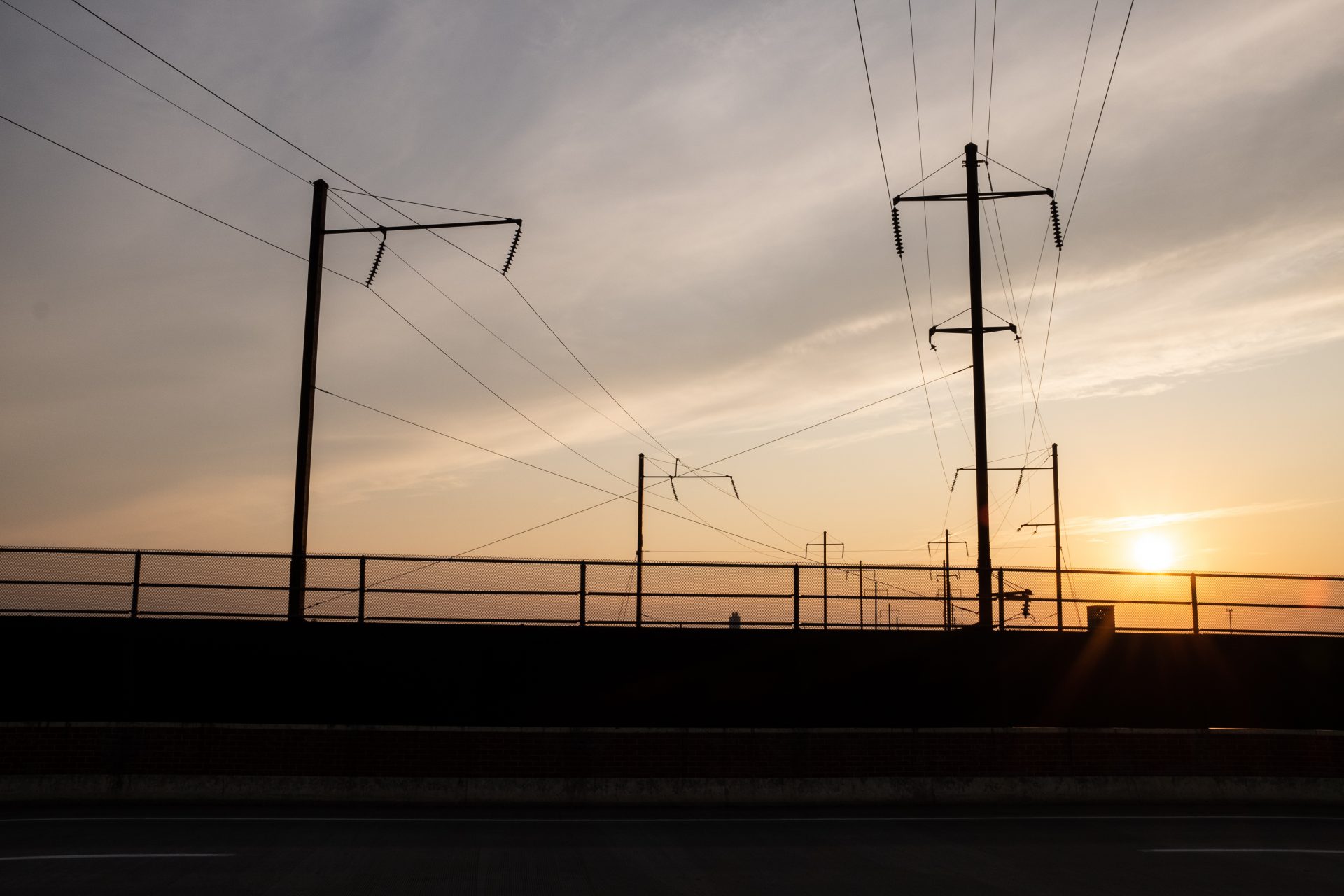
Power lines stretch over Lancaster in this Aug. 5, 2019, photo.
Ian Sterling for WITF


Power lines stretch over Lancaster in this Aug. 5, 2019, photo.
Ian Sterling for WITF

Ian Sterling for WITF
Power lines stretch over Lancaster in this Aug. 5, 2019, photo.

Ian Sterling for WITF
Power lines stretch over Lancaster in this Aug. 5, 2019, photo.
Electricity rates are rising for most Pennsylvania residents, just in time for what federal climate scientists say will be a hotter than average summer.
PECO’s customers will see the lowest rise at 8.1%, while PPL, which serves some suburban Philadelphia residents, will experience a much higher 38% increase.
Prices are up because of rising costs of natural gas, which generates about half of the state’s electricity.
“The price hikes are directly related to the ongoing volatility in the wholesale energy markets,” said Patrick Cicero, acting Consumer Advocate for the Pennsylvania Office of Consumer Advocate. “And the reason that the gas prices are high is because [the country] has significantly increased exports of liquefied natural gas and has not increased natural gas production.”
Cicero says the difference in price increases between utilities comes down to long-term contracts and procurement strategies. The utilities are required to shop for the best price. He says PECO locked in better rates when the prices were low, but rate hikes change with each quarter. PECO serves consumers in Philadelphia and its suburbs.
“PECO is not beating the average over time,” Cicero said. “Philadelphia and suburban Philadelphia customers are benefiting now from PECO’s procurement strategy.”
In Pennsylvania, electricity bills are split in half between the actual cost of the energy, and the cost of sending it through power lines. Utilities don’t make a profit on the price of electricity, but do pass on increased costs to customers. The profits come from distribution, which is regulated by the Pennsylvania Public Utility Commission.
Residents can shop for an electricity supplier through the PUC’s PA Powerswitch. The process is known as “price to compare” where ratepayers can choose to get electricity from a competitive supplier rather than from the utility that transports and distributes the power such as PECO and PPL.
Rates for those who shop or already have an alternative supplier didn’t necessarily go up June 1. But consumer advocates warn that unless you are willing to take the time and do your homework, it’s best to stick with the utility such as PECO as the provider in the long run.
Rob Ballenger, director of the energy unit at Community Legal Services, says buyer beware when it comes to navigating a switch.
“If someone knocks on your door and says, hey, I’m here to save you money on your electricity, you should be suspicious of that,” Ballenger said. “I would just say no thank you and shut the door.”
A case study done by the Kleinman Center for Energy Policy in 2016 concluded that small commercial and residential customers benefited from sticking with the utility, known as the “default service provider.”
“Because the utilities were doing a good job of shopping for them,” Ballenger said.
Cicero, from the Pennsylvania Consumer Advocate, agreed, and said those who shop should be prepared to do their homework.
“What I’m concerned about is this is going to be a marketer’s dream,” Cicero said. “They’re going to market over the fear of price increases. And you may get a deal that you don’t want to get.”
Cicero says if you want to switch, make sure to read the fine print. Some suppliers include varying rates and cancellation fees. On June 1, PECO’s rate will be 7.6 cents per kilowatt hour, while the best price to compare for an alternative supplier is now 10.8 cents per kilowatt hour.
“They are all going to the same well, the wholesale energy market regulated by PJM [Interconnect],” said Cicero, referring to the region’s grid operator. “Even with a fixed rate price, no cancellation fees, no monthly fees or no enrollment fees, there is still no offer that is better than PECO’s.”
There is the option known as the “standard offer program,” where customers get a 7% discount on the PECO price to compare with a 12-month fixed rate. But Cicero said those are not always available.
Customers who want to switch back to the default service provider need only call their utility. There may be cancellation fees involved, but nonpayment of those fees will not result in a shut-off.
Help is available for people struggling to pay their electric bills, regardless of income. PECO provides budget billing for customers to divide payments equally across 12 months. Payment arrangements are also available. Lower income customers still have time to take advantage of LIHEAP assistance, which has a June 17 deadline for applications, as well as the Customer Assistance Program and funds for weatherization.
StateImpact Pennsylvania is a collaboration among WITF, WHYY, and the Allegheny Front. Reporters Reid Frazier, Rachel McDevitt and Susan Phillips cover the commonwealth’s energy economy. Read their reports on this site, and hear them on public radio stations across Pennsylvania.
(listed by story count)
StateImpact Pennsylvania is a collaboration among WITF, WHYY, and the Allegheny Front. Reporters Reid Frazier, Rachel McDevitt and Susan Phillips cover the commonwealth’s energy economy. Read their reports on this site, and hear them on public radio stations across Pennsylvania.
Climate Solutions, a collaboration of news organizations, educational institutions and a theater company, uses engagement, education and storytelling to help central Pennsylvanians toward climate change literacy, resilience and adaptation. Our work will amplify how people are finding solutions to the challenges presented by a warming world.